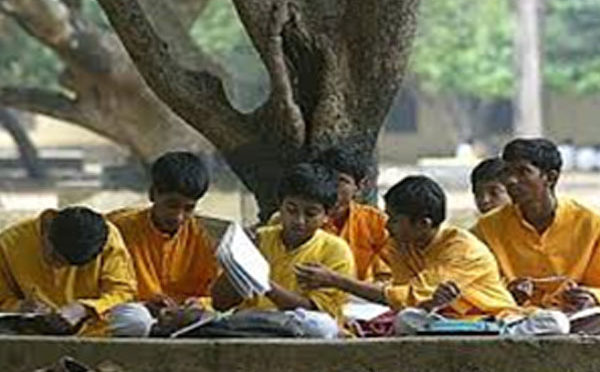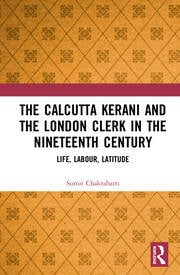What Children Love
Posted on : September 28, 2020Author : AGA Admin

The age old routine of attending classes with teacher talking time, being 90% and 40 students getting to barely speak for a second per child in a 40 minute period, has to undergo a change. So too the practice of examinations once every term , with the Final exam being the most frightening for all students ,as on that one exam, rests their fate. There is an urgent need for students to be intimately involved in the learning – teaching process, and be made to feel that they have a role to play in the education being imparted to them. Unless the children are made an integral part of the process, they will not be interested in the proceedings, which for them will just be a boring harangue, and nothing more.
A system, where the teacher introduces a topic elaborates on it, and discusses everything on which there is a difference of opinion, encouraging children to share their opinions freely, without fear of being shamed or laughed at, and where there is no value judgements made, is the first step towards making learning meaningful. If teacher talking time is substantially reduced and the students get some of that time to air their views, with the teacher ensuring that the discussion is leading to some definitive conclusions, comprehension of a topic and interest in it are both encouraged. A student invariably agrees with their friends’ views and they feel that they are an important part of the class. A class then ceases to be ‘us ‘and ‘them’ and becomes a coherent ‘we’. I think that in this manner, the first step towards learning is achieved .Discussions and student sharing time are both time consuming, for sure, and every teacher has a certain defined syllabus. However, the extent of learning that happens, with class involvement and participation of a larger group is far greater and the children benefit immensely from this system.
The other major stumbling block in our way of imparting education is the examination system. We expect our students to learn everything, with or without understanding, and bring it all out at the two examinations held in an academic year, called the half yearly exam and the Annual examination. Particularly, the last exam becomes a big nightmare for the children, parents and teachers too sometimes. The worst affected are the students ,for whom the final exam is a life and death issue as her/his promotion to the next class depends on that one time , when in a two or three hour period , the child’s fate is either made or sealed. Just imagine a situation , where a student is unwell , or there has been a tragedy in the immediate family, or even if a student has had an argument with a parent or a friend even, on the morning of the exam, would the child be able to perform to his /her optimum ability? Even something like a power break down the night before an exam, or a rebuff from a friend or teacher, while on her way to the exam hall, which itself is a frightening prospect and unfamiliar territory, can cause havoc in a student’s mine. But this is, unfortunately, the pattern of examination, in most schools in India.
This is where one feels that the continuous cumulative evaluation, introduced by the CBSE for a couple of years, was an extremely welcome innovation and a very heartening one as well. Here the evaluation of students is not dependant on a single exam, but on a series of evaluation methods, which are least stressful for the kids and make the entire learning teaching process, fun. Ideally teachers can teach for 50% of the time and then take a quick assessment on the chapter taught, with short answer questions and MCQs. This serves two purposes, one, the student will be alert in class and second the teacher gets an immediate feedback of the comprehension of students. The teacher can do a quick check and change or modify her teaching techniques, or if the results are satisfactory, she can carry on with little or no changes. These tests cause no stress as the tests are given whenever a concept is introduced and generally students will have no clue of the test till it is held. These tests can be short 10 mark tests given, off and on, and the marks of the best 3 or 4 short impromptu tests are included in the final assessment.
Another way to make learning and testing,( if it must be called that,)in class more interesting is by giving children projects on various subjects. They can work in groups or pairs and maybe individually on a topic, which the students can decide on, with specific teacher guidelines given beforehand. The projects can involve reading, interviewing friends and others, using goggle for information and generally discussing and brainstorming, for which some classes can be used. There will be some excitement and much noise but that will be productive noise and conducive to learning. Group work, in fact, with some peer teaching, helps a lot, as students generally have more faith in what their friends say, than what adults propound. Dividing a relatively simple poem into verses and allotting a stanza to one group and then using a double period to let students discuss the stanza, followed by a feedback session by each group, makes the students involved and enables them to think and reflect, share and argue and then come to a conclusion. The teacher plays the role of a facilitator and ensures that all children speak, especially the shy ones, and then a recorder cum presenter, is appointed for each group. When the group presents, the teacher should ideally intervene, with valid points, and lead the discussion on a path that is acceptable to all. To totally throw the students’ views, out of the window, is not acceptable as perspectives have to be accepted and acknowledged. Wherever the students seem stuck or the lines that are slightly confusing and difficult, can be discussed and thrashed out, then and there, The groups can be free to question other groups and seek clarifications and thus a piece of literature is both enjoyed and internalised to everyone’s satisfaction.
Trips and outings too, can be enjoyable and a great learning experience. Along with acquiring information relating to their texts, they also acquire life skills, which are a great boon in the long run, and their inter personal skills are also honed. Hence trips and excursions should be incorporated in the school schedule as they are greatly enriching and enlightening. Films and slide shows ,music played for creative writing exercises, visit to art exhibitions and folk theatre and so many other things can be seen, enjoyed by the students and be part of the assessment pattern. Language teachers can use them to teach appreciation of art, theatre, music etc history teachers can use visits to archaeological sites for their lessons. Maths and science teachers can also have simple experiments and calculations taught by means of trips to certain monuments. The role played by music in any Nationalist movement can be experienced and felt when students learn and sing those soul stirring songs. And everything lends itself to assessment of a child’s multiple intelligence strengths and skills.
Not that pen and paper tests should be totally abolished. No, not at all. They too serve an important purpose and are necessary for certain evaluations. But basing the assessment of a child only on what was written in a two or three hour period and taking that, as the last word about a student’s abilities and skills is certainly not desirable. If only our schools had followed the continuous cumulative assessment done through the academic year, with various teaching and assessment tools, the 2020 endemic would not have had the traumatic effect on students and parents , that it did. The final exams or the board exams being cancelled would not have been as great a calamity for schools, and all connected parties as it was. We need to adapt new creative, innovative methods of not just teaching, but of assessing the capability of our students. This would be greatly beneficial to the physical, intellectual and most importantly the mental health of our young adolescents. Maybe with multiple and continuous assessments, we could reduce stress of a single life shattering final exam that leads many a child to sometimes adopt unethical methods a. It would most certainly keep alive the tens of young lives lost due to stress of examinations .And it would most certainly make learning and assessment an enjoyable and enriching process.
Paramita Ray
Educationist
Advisor, Asia in Global Affairs





Heres how to quit being nervous about what other gentlemen think.
fantastic post, very informative. I wonder why the other specialists of this sector do not notice this. You should continue your writing. Im sure, youve a great readers base already!